Antiquity solders are nowadays a theme very common in toy soldiers production. In this post the armies of ancient civilizations are shown.
Bibliography:
Wise, Terence & Richard Hook. Armies of the Carthaginian Wars 265-146BC. Men-at-Arms Series 121. Osprey Military. 1982
Wise, Terence & Angus McBride. Ancient Armies of the Middle East. Men-at-Arms Series, 109. Osprey Military. 1981.
Assyrians
Assyrians were one of the most feared peoples of ancient Middle East. Albeit their important role in ancient History there are not many representations in toy soldiers production.
Engineer Basevich
This Russian maker made a very nice set of 12 different figures including what might be a Princess. With this box if the objective is to make an Assyrian army we will get an enormous amount of Generals and Kings, and no Cavalry.

This group includes what could be a priest, a king, a Princess and the General with, probably the command symbol.
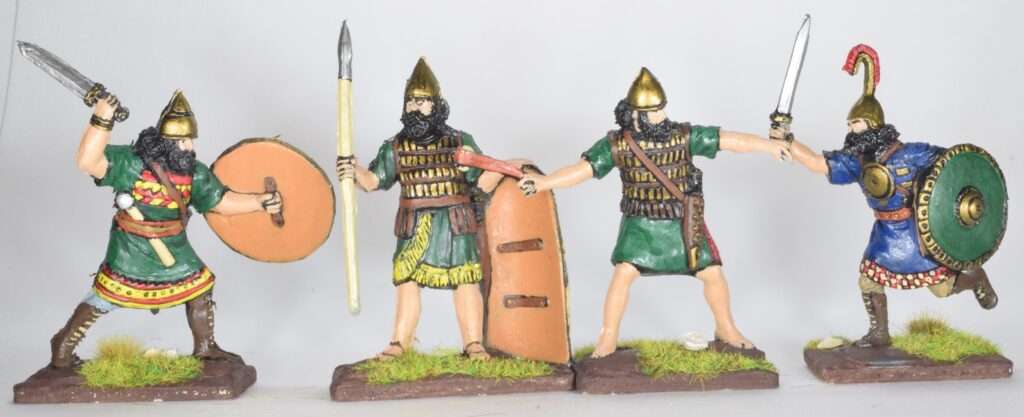
Heavy infantry. The oblong shield is characteristic of Assyria.
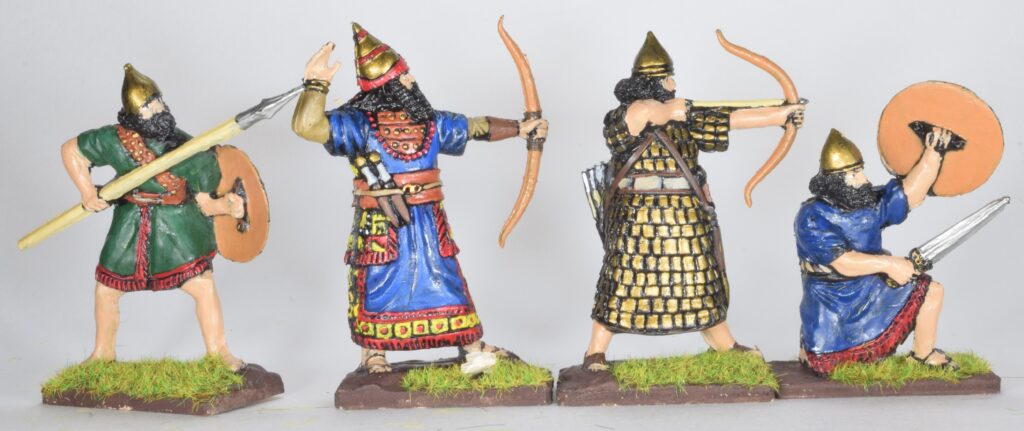
Archery is also fundamental to an Assyrian army.
The sculpting of figures is not very crisp, however, with a bit of paint work they became nice in the shelf.
Hebrew Army
It seems that only a maker did an ancient Hebrew army. Unfortunately not many soldiers in each box.
Engineer Basevich
Very good figures even if a bit chunky.
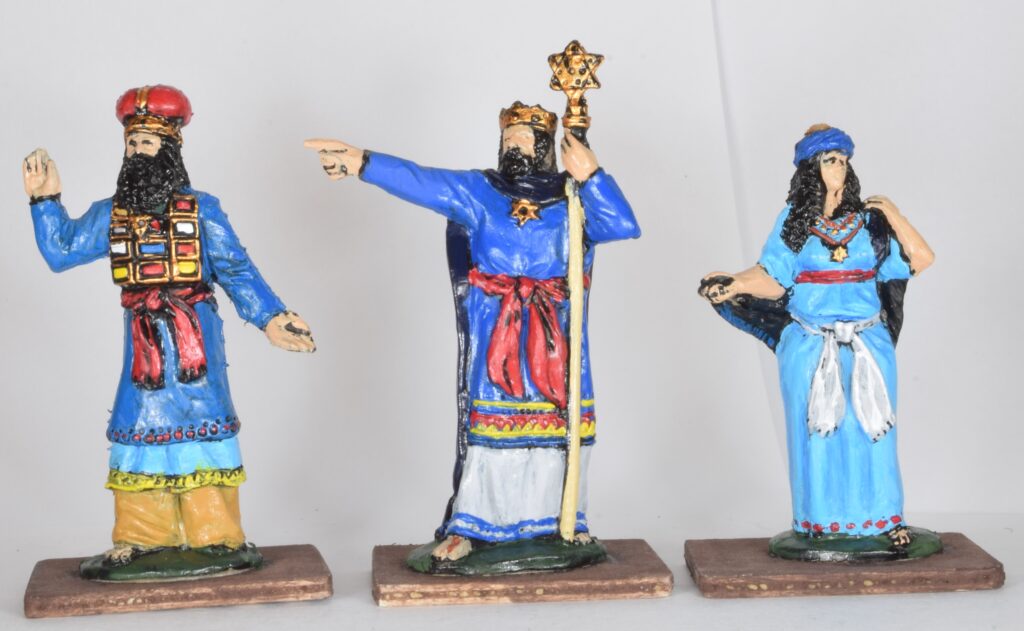
These figures represent the command of the army with a Rabi, the king (Salomon ?) and a princess.
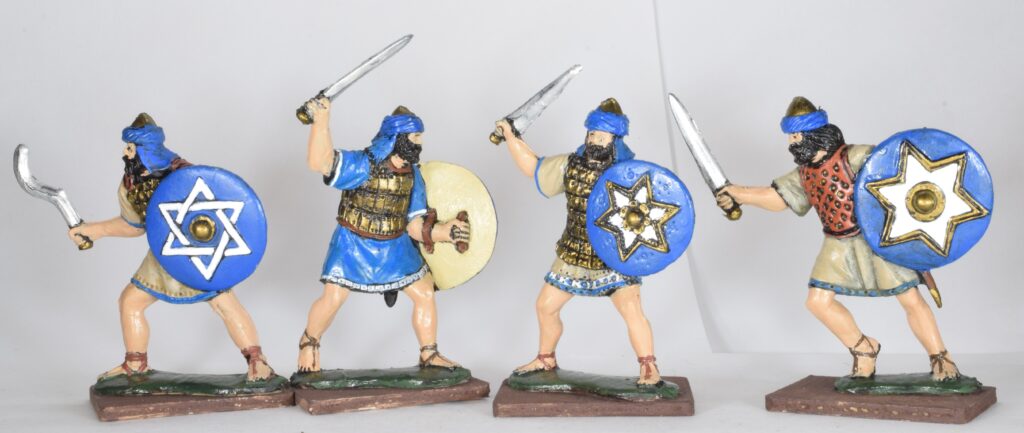
The heavy infantry with swords and lamellar cuirasses. The first soldier is armed with the “khopesh” sword.
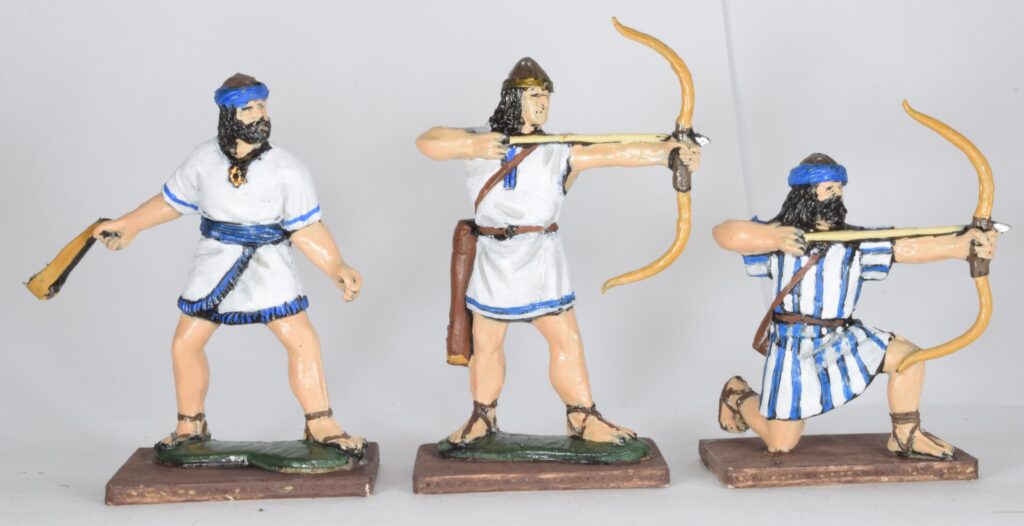
The light infantry with a slinger and bowmen. The only protection is the conical helmet
Troy Army
The war of Troy was the theme for the Homer work “Iliad”. Between history and legend this war was the theme for some toy soldier companies.
Atlantic
This company made some very nice figures of less known themes. Nowadays they are classics even if not strictly historic.
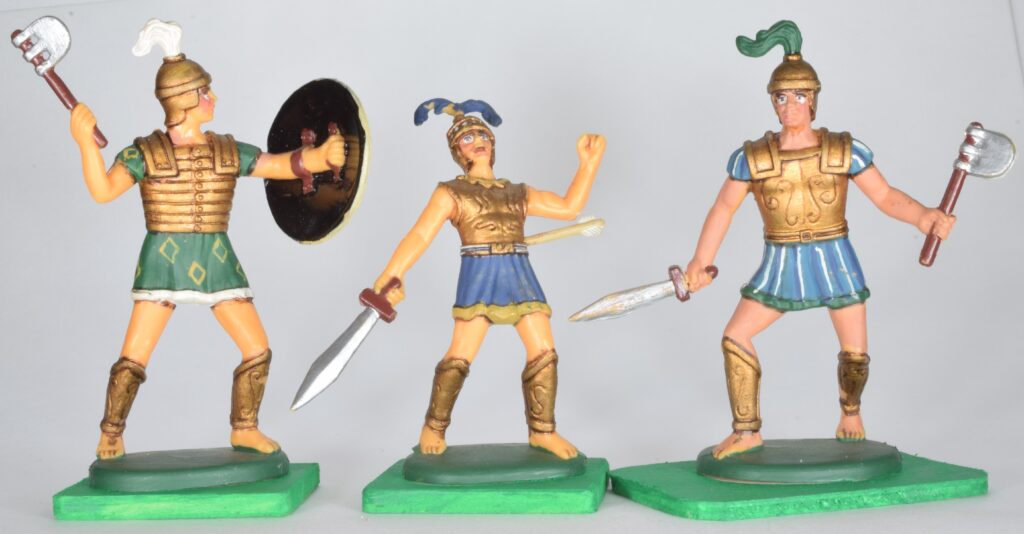
Well sculpted figures with ornamented cuirasses. The axes are historically correct and are known as eye-axes. Notice that arrows always strike sideways because of mould constrains. Unfortunately I don’t know who did this very nice paint job.
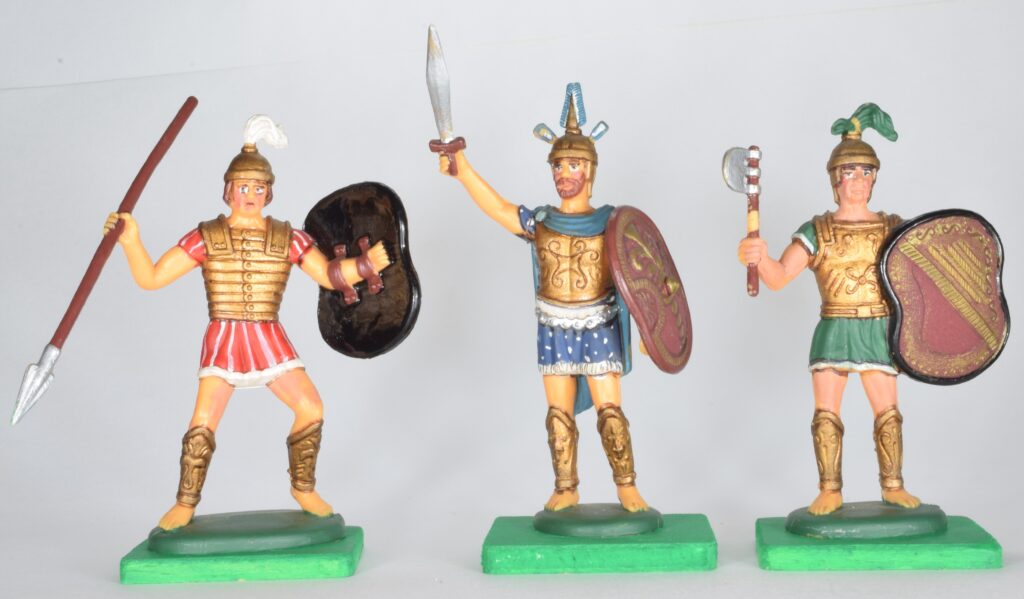
The shield with an “8” shape were characteristic of some Bronze Age civilizations. The figure with the more elaborate helmet is most probably the chieftain.
LOD
The LOD figures are made of a few separate pieces which allows for more 3D figures. The size is close to 60 mm.
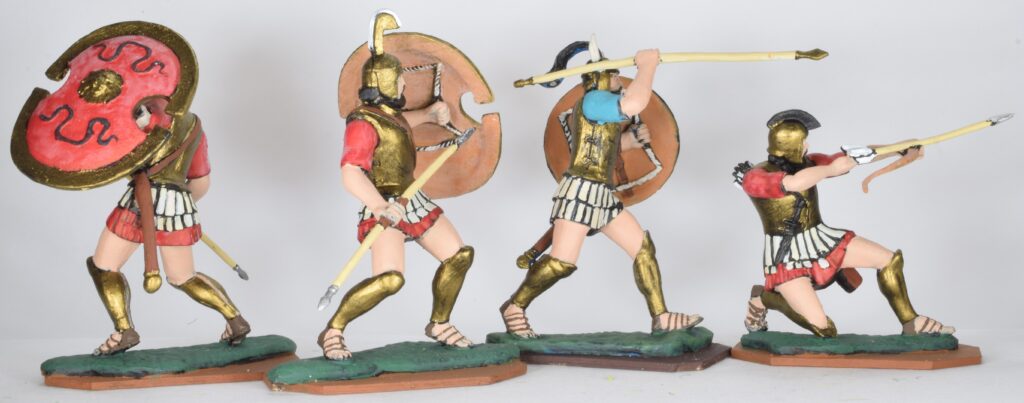
This figures show both round and 8-shaped shields.
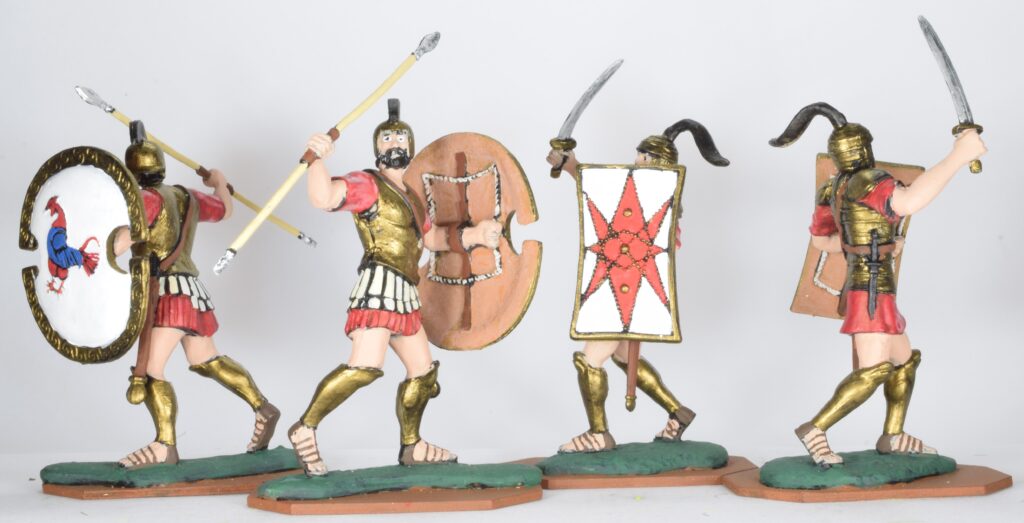
Along the 8-shape shield a less common rectangular one. Painted by me.
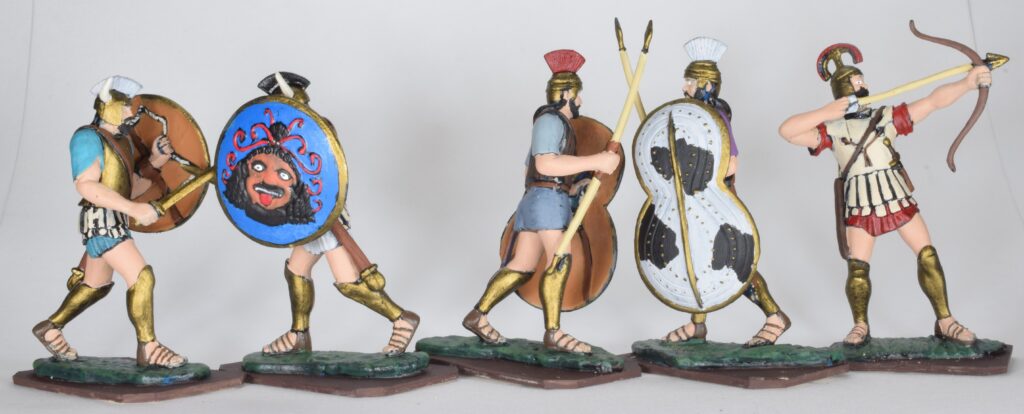
More round and 8-shaped shields. Some were covered with cow skin resulting in characteristic black and white pattern. Some paintings on shield surface were intended to terrify the enemies in an example of psychologic warfare. Archery was not very praise by Greek society and was seen as an immoral way of defeating the adversary.